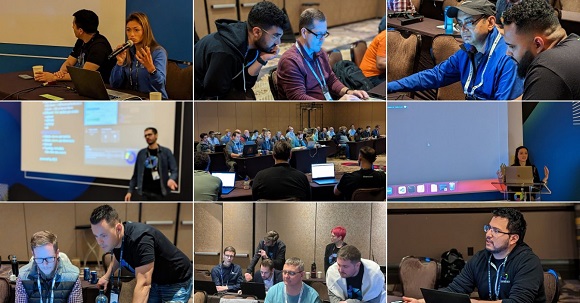Dynatrace Perform keynote day #1: an observability automation vision defined
Software intelligence company Dynatrace used its annual ‘Perform’ software application development and data engineer user, customer and partner event this February to detail its company vision and to also describe the direction of its automation observability roadmap.
The show-proper kicked off with a multi-part opening keynote session.
After a welcome from the affable outgoing British emcee Mark Jeffries, the intro was tabled as follows:
Dynatrace momentum and vision with Dynatrace CEO Rick McConnell – followed by a presentation entitled ‘defying boundaries to drive success’ with Dynatrace chief marketing officer Mike Maciag and Dynatrace SVP of product management Steve Tack.
McConnell was pleasingly upbeat about the chance for events such as this one to be able to be hosted in person.
“Just as sure as [now] is a difficult environment economically on a global level, it is just as sure that recovery and breakout opportunities will also occur – and so – Dynatrace is committed to helping to make those opportunities happen in an era [today] when cloud enables us to do so much more (and at an accelerated speed) than ever would be possible with on-premises technologies,” said McConnell.
CEO McConnell suggests that the growth of cloud services provider hyperscalers is indicative of the opportunities that businesses are presented with to now recover and counter the current global recessionary challenges.
The Dynatrace CEO also says that if we listen to Satya [Nadella] at Microsoft (or other companies) there’s a lot of talk about optimisation – but a lot of that talk is about cost optimisation and making sure that extraneous workloads are not encumbering businesses. Getting to a precise point with observability where it has been driven from optional – to mandatory – is what Dynatrace says is ‘cloud done right’ in terms of end-to-end observability across clouds.
Dynatrace duo: Tack & Macaig
As Steve Tack and Mike Maciag took the stage, a secondary joint keynote session continued.
Tack and Maciag spoke of the challenges firms are having adopting Kubernetes and wider open source technologies at scale. There is clearly a struggle going on with firms embracing cloud-native platform development and being able to do so in a holistically secured manner.
The pair explained that when looking at the notion of BizDevSecOps, we know that answers through automation are needed for this model to be able to work in real-time.
There is clearly an explosion of information and (the suggestion here is that) many businesses are struggling to deal with factors such as their data ingestion rates perhaps doubling every year. The upshot of that happening (and Tack says it is happening) is that when the pipeline pushes that much data through, firms are often generally not finding that their data analytics capabilities also double at the same time.
Referencing several real world customer use cases, the Dynatrace duo explored the world of high-fidelity data from code-level logs and traces all the way up to the use of business data in enterprise applications.
These two colleagues do genuinely work together and hold a mutual respect for each other, when most of the keynote presenters at a show wear t-shirts (which these guys did), you know the speakers are more interested in explaining the technology platform without trying to showboat in any way – it’s good stuff.
Greifeneder triple pack
Why settle for one keynote session when you can schedule three, right? That was clearly front of mind for founder and chief technical officer at Dynatrace Bernd Greifeneder.
Greifeneder took the audience through several product updates which the Computer Weekly Developer Network will report on separately.
“The ability to conduct exploratory, causal-AI-based analytics on petabytes of unified observability, security and business event data multiplies the value of this data for our customers,” said Greifeneder.
Ending with an end session focused on the upper tier makes logical enough sense. Describing the new user experience functionalities in Dynatrace, Rasika Krishna-Schmid user experience specialist explained how the new Dynatrace Strato design system has been built to deliver both consistency and user customisability at the same time.
New developments include a custom-engineered typeface and new flexible interface components with embedded actions – all of which should enable users to get to what they need faster.
All of these developments have helped work towards Dynatrace create a new user interface, very much styled in a kind of mobile-first browser-first icon-centric kind of way.
There is much to absorb here and we’re working towards a world of polymorphed multi-cloud observability across complex topographies through the new and expanded use of data-intensive low-code automated intelligence.

Bernd Greifeneder, founder and chief technical officer at Dynatrace.





